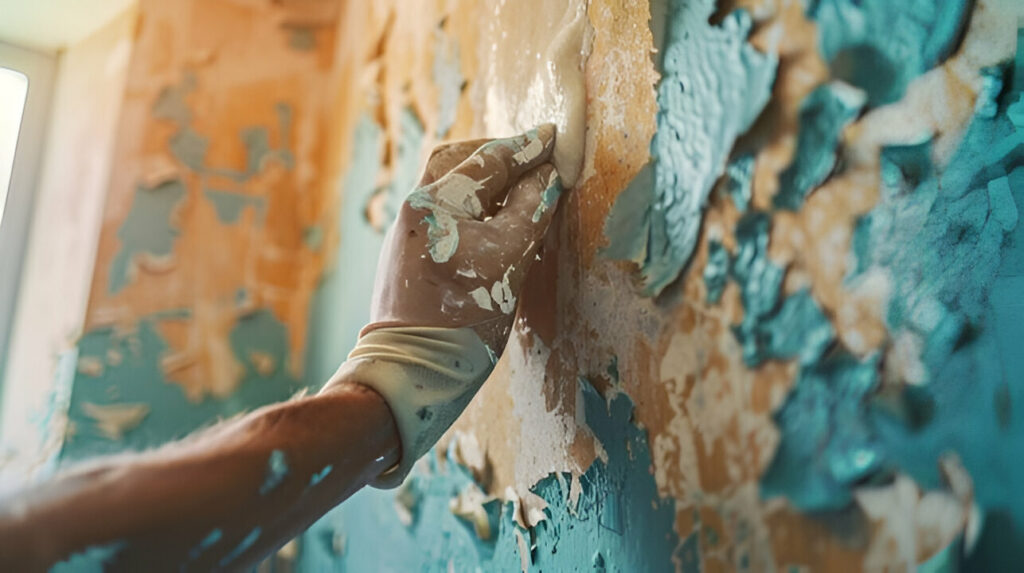Removing old paint may not be the most exciting part of a renovation, but it’s one of the most important. Whether you’re repainting your walls, refreshing old furniture, or updating your exterior, properly removing old paint ensures your new coat adheres well and lasts longer. At Aryana Painters, we always emphasize surface preparation as the foundation of a professional finish.
In this comprehensive guide, we’ll walk you through the best methods for removing old paint—whether you’re a DIYer or looking to understand the process before hiring professionals.
Table of Contents
- Why Removing Old Paint Is Essential
- Tools You’ll Need to Remove Old Paint
- Preparing Your Space
- Best Methods for Removing Old Paint
- How Much Paint Should You Remove?
- Surface Cleaning and Final Prep
- Proper Disposal of Old Paint
- Expert Tips from Aryana Painters
Why Removing Old Paint Is Essential
If you skip the step of removing old paint, your new paint job might not last. Paint that’s cracking, peeling, or bubbling won’t hold new paint well—and you could end up repeating the job far sooner than expected.
Paint removal is especially important if:
- You’re seeing peeling or chipping.
- The old surface feels rough or uneven.
- There are multiple layers of paint.
- You’re switching from oil-based to latex paint (or vice versa).
Safety Note: Homes built before 1990 may contain lead-based paint. Always test with a lead paint kit from local stores like Canadian Tire or Home Depot. If lead is present, consider consulting with professionals to ensure safe removal.
Tools You’ll Need to Remove Old Paint
Every successful paint removal job starts with the right tools. Depending on the surface and the condition of the existing paint, you may need some or all of the following:
- Safety equipment: Gloves, protective eyewear, dust mask or respirator
- Scraper or putty knife: Ideal for lifting peeling paint
- Sandpaper or electric sander: For smoothing rough spots
- Chemical paint stripper: Effective on multiple or stubborn layers
- Heat gun: Loosens old paint, especially on wood or metal
- Drop cloths or plastic sheeting: Protects floors and furniture
- Painter’s tape: Shields trim or adjacent surfaces
- Bucket of water and sponge: For post-removal cleanup
Need help choosing the right paint supplies? Check out our painting tools guide for expert recommendations.
Preparing Your Space
Paint removal is messy. To keep things under control:
- Move or cover furniture with plastic sheets.
- Lay down drop cloths to catch debris and paint chips.
- Tape off windows, trim, and any areas you don’t want affected.
- Ventilate the room—open windows and set up fans when using chemical strippers or sanding.
Good prep will save you time during cleanup and protect surrounding areas.
Best Methods for Removing Old Paint
1. Scraping
If the paint is already flaking or peeling, a simple scraper will do the trick. Hold it at a 45-degree angle and gently lift away the loose paint.
Tip: Use gentle pressure to avoid gouging the surface, especially on wood or drywall.
2. Chemical Paint Strippers
For thick or multiple paint layers, a chemical stripper is your best bet. Apply it as per the product’s instructions and wait for the paint to bubble. Then scrape it off.
Caution: Always wear gloves and a mask, and make sure the space is well-ventilated. Follow the manufacturer’s safety guidelines carefully.
3. Sanding
Sanding is great for smoothing rough spots or removing thin paint layers. Use coarse sandpaper to begin, then move to finer grits for a polished finish.
- Manual sanding is good for small areas.
- Power sanders are ideal for large walls or furniture.
Avoid excessive sanding on drywall—it’s easy to damage the surface.
4. Heat Gun
Heat guns are perfect for stubborn paint on wood or metal. Keep the nozzle a few inches from the surface and move in circular motions to avoid scorching.
Tip: Use a scraper while the paint is still warm for easier removal.
How Much Paint Should You Remove?
You don’t always need to strip down to bare wood or drywall. Here’s a simple guideline:
- If the surface is smooth and well-adhered, a light sanding may be enough.
- If it’s cracking, bubbling, or peeling, those layers must come off entirely.
Test a small section first to assess how deep you need to go.
Surface Cleaning and Final Prep
Once you’ve removed the old paint:
- Wipe down the area with a damp cloth to remove dust and debris.
- If you used chemical strippers, make sure no residue remains.
- Sand lightly to ensure the surface is smooth and ready for primer.
A well-prepped surface leads to a more even, durable paint job. Need help with prepping for your next paint project? Our interior painting services can take care of it for you.
Proper Disposal of Old Paint
Disposing of paint responsibly is just as important as applying it. Here’s how:
- Lead-based paint or paint chips: Must be disposed of via hazardous waste collection (check your local municipality).
- Dried latex paint: Mix with cat litter or paint hardener, allow it to dry completely, then place it in your regular garbage.
- Chemical waste: Most cities have designated drop-off locations.
Check your local recycling depot or municipal website for detailed instructions.
Expert Tips from Aryana Painters
- Take your time: Rushing the process often leads to mistakes or damage.
- Test a small area first: Each surface reacts differently to removal techniques.
- Don’t chase perfection: The goal is a clean, smooth surface—not bare wood or drywall.
- Consider professional help: Some jobs (especially with lead paint or textured surfaces) are best left to experts.


